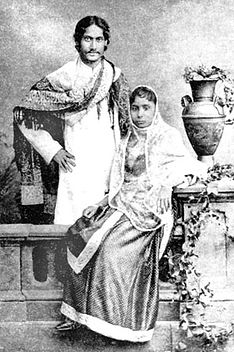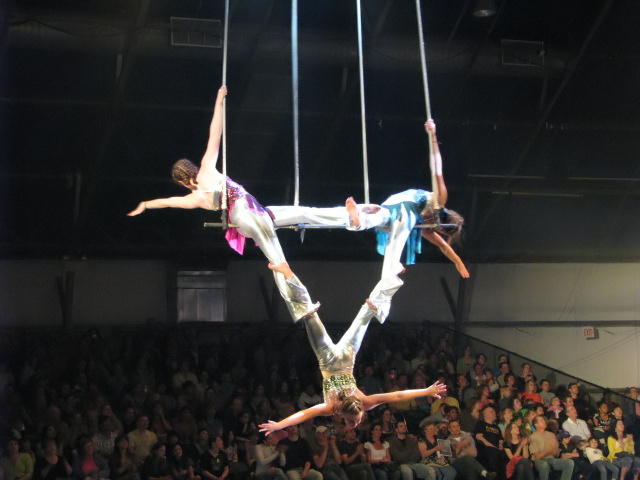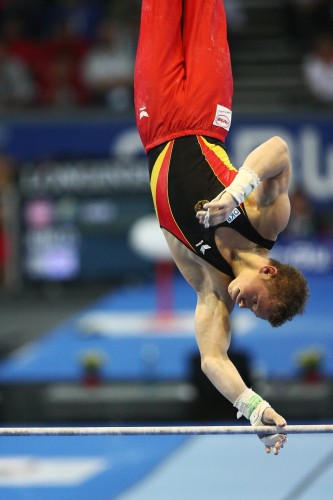|
Nabagopal Mitra
Nabagopal Mitra ( bn, নবগোপাল মিত্র; 1840– 9 February 1894) was an Indian playwright, poet, essayist, patriot and one of the founding fathers of Hindu nationalism. He founded the Hindu Mela (which was inaugurated by Rajnarayan Basu ) the pioneer institution behind the genesis of Hindu nationalism. Mitra also founded National Press, National Paper, National Society, National School, National Theatre, National Store, National Gymnasium and National Circus, earning him the sobriquet 'National Mitra'. Early life and influences Nabagopal Mitra was born into a Bengali Hindu Kayastha family residing at Shankar Ghosh Lane, near Cornwallis Street in Kolkata. The year of birth is disputed. While most historians agree that he was born in 1840, in some sources his year of birth is recorded as 1841. From his early days he was very close to the Tagore family. Satyendranath Tagore and Ganendranath Tagore were his classmates at the Hindu School. Gradually he bec ... [...More Info...] [...Related Items...] OR: [Wikipedia] [Google] [Baidu] |
Calcutta
Kolkata (, or , ; also known as Calcutta , List of renamed places in India#West Bengal, the official name until 2001) is the Capital city, capital of the Indian States and union territories of India, state of West Bengal, on the eastern bank of the Hooghly River west of the border with Bangladesh. It is the primary business, commercial, and financial hub of East India, Eastern India and the main port of communication for North-East India. According to the 2011 Indian census, Kolkata is the List of cities in India by population, seventh-most populous city in India, with a population of 45 lakh (4.5 million) residents within the city limits, and a population of over 1.41 crore (14.1 million) residents in the Kolkata metropolitan area, Kolkata Metropolitan Area. It is the List of metropolitan areas in India, third-most populous metropolitan area in India. In 2021, the Kolkata metropolitan area crossed 1.5 crore (15 million) registered voters. The ... [...More Info...] [...Related Items...] OR: [Wikipedia] [Google] [Baidu] |
Adi Brahmo Samaj
Adi Dharm refers to the religion of Adi Brahmo Samaj ( bn, আদি ব্রাহ্ম সমাজ, Adi Brahmô Shômaj) the first development of Brahmoism and includes those Sadharan Brahmo Samajists who were reintegrated into Brahmoism after the second schism of 1878 at the instance of Hemendranath Tagore. This was the first organised casteless movement in British India and reverberated from its heart of Bengal to Assam, Bombay State (Maharashtra and Gujarat), Punjab and Madras, Hyderabad, and Bangalore. Tenets It was never conceived as an "anti-caste" movement, but stood for repudiation of all "distinctions between people" and foundation of a modern educated Indian nation under the timeless and formless God, and its adherents as Adi-Dharmis (or worshipers of the ancient formless indivisible One God called ''Brahma'' or the ''Parambrahma'' "The One without a Second" or ''EkAdavaitam''). Although the doctrine of Adi Dharma is superficially similar to other reformatory "sec ... [...More Info...] [...Related Items...] OR: [Wikipedia] [Google] [Baidu] |
Pehlwani
Pehlwani, (पहलवानी) also known as Kushti, is a form of wrestling contested in South Asia. It was developed in the Mughal Empire by combining Persian Koshti pahlevani with influences from native Indian Malla-yuddha. The words ''pehlwani'' and ''kushti'' derive from the Persian terms ''pahlavani'' (heroic) and ''koshti'' (wrestling, lit. killing) respectively, meaning Heroic wrestling. A practitioner of this sport is referred to as a ''pehlwan'' (Persian word for ''hero'') while teachers are known as ustad (Persian word for ''teacher'' or ''master''). One of the most famous practitioners of Pehlwani was The Great Gama (Ghulam Mohammad Baksh Butt), who is considered one of the greatest wrestlers of all time. Kodi Rammurthy Naidu was another example. Brahmdev Mishra was also a great example of Indian wrestler who was known for his technique and physique not only in India but all over the world. Pehlwani is one among the sports that influenced catch wrestling, which i ... [...More Info...] [...Related Items...] OR: [Wikipedia] [Google] [Baidu] |
Trapeze
A trapeze is a short horizontal bar hung by ropes or metal straps from a ceiling support. It is an aerial apparatus commonly found in circus performances. Trapeze acts may be static, spinning (rigged from a single point), swinging or flying, and may be performed solo, double, triple or as a group act. The name of the apparatus reflects the trapezoid shape made by the horizontal bar, ropes and ceiling support. History The art of trapeze performance is reported to have been developed by Jules Léotard, a young French acrobat and aerialist, in Toulouse in the mid-1800s. He is said to have used his father's swimming pool to practice. However, the name "trapeze" can be found in books dating as far back as twenty years earlier, before Léotard was born. One such example is George Roland’s “An Introductory Course of Modern Gymnastic Exercises”, published in 1832. Roland proposes the idea that the trapeze might owe its origin to Colonel Amoros, but ultimately deems the question o ... [...More Info...] [...Related Items...] OR: [Wikipedia] [Google] [Baidu] |
Horizontal Bar
The horizontal bar, also known as the high bar, is an apparatus used by male gymnasts in artistic gymnastics. It traditionally consists of a cylindrical metal (typically steel) bar that is rigidly held above and parallel to the floor by a system of cables and stiff vertical supports. Gymnasts typically wear suede leather grips while performing on the bar. Current elite-level competition uses a stainless steel core rail. The gymnastics elements performed on the horizontal bar are regulated by a Code of Points. A bar routine, which is a sequence of several bar skills, usually includes giants with various grips (overgrip, undergrip, dorsal grip, mixed grip), in-bar work, turns, release and regrasp skills, and a dismount. The horizontal bar is often considered one of the most exciting gymnastics events due to the power exhibited by gymnasts during giant swings and spectacular aerial releases and dismounts that often include multiple flips or twists and, in some cases, airborne tr ... [...More Info...] [...Related Items...] OR: [Wikipedia] [Google] [Baidu] |
Parallel Bars
Parallel bars are floor apparatus consisting of two wooden bars slightly over long and positioned at roughly head height. Parallel bars are used in artistic gymnastics and also for physical therapy and home exercise. Gymnasts may optionally wear grips when performing a routine on the parallel bars, although this is uncommon. Apparatus The apparatus consists of two parallel bars that are held parallel to, and elevated above, the floor by a metal supporting framework. The bars are composed of wood or other material, with an outer coating of wood. The vertical members of the supporting framework are adjustable so the height of the bars above the floor and distance between the bars can be set optimally for each gymnast. Dimensions *Bar length: ± *Bar rounded profile: ± vertical by ± horizontal *Bar width: ± *Height of bar from floor: ± *Distance between bars: – (adjustable) History The parallel bars (in German ''Barren'') were invented by Friedrich Ludwi ... [...More Info...] [...Related Items...] OR: [Wikipedia] [Google] [Baidu] |
Presidency University, Kolkata
Presidency University, Kolkata (formerly known as Presidency College, Kolkata) is a second major public state aided research university located in College Street, Kolkata. Considered as one of best colleges when Presidency College was affiliated to University of Calcutta. Established in 1817, it is the oldest college in India (in Asia as well). It was formerly known as Hindu College and then Presidency College and now Presidency University. The institution was elevated to university status in 2010 after functioning as a top constituent college of the University of Calcutta for about 193 years. The university had its bicentenary celebrations in 2017. In its first cycle as a university, Presidency received A grade with a score of 3.04/4.00 by the NAAC. Presidency has been recognized as an "Institute of National Eminence" by the UGC. It appeared in the inaugural list of top 50 institutions of NIRF rankings in 2016. However, NIRF rankings in 2017 and 2018 excluded universiti ... [...More Info...] [...Related Items...] OR: [Wikipedia] [Google] [Baidu] |
George Campbell (1824–1892)
Sir George Campbell, , DCL (1824 – 18 February 1892) was a Scottish Liberal Party politician and Indian administrator. Campbell was born in 1824, the eldest son of Sir George Campbell, of Edenwood, whose brother became the 1st Baron Campbell. He was educated at Hamilton Academy and embarked for India. From 1871 to 1874 he was Lieutenant-Governor of Bengal. During his tenure the Pabna Disturbances occurred. With his proclamation on 4 July 1873 during the Pabna Peasant Uprisings, guaranteeing government support of peasants against excessive zamindar demands he ensured that the prostest remained peaceful, at the same time antagonising the landlords and his namesake George Campbell, 8th Duke of Argyll at that time Secretary of State for India. He was Member of Parliament (MP) for Kirkcaldy Burghs from 1875 to 1892. Campbell married, in 1853, Laetitia Maria Vibart, daughter of John Gowan Vibart, of the Bengal civil service, and left several children. Lady Campbell died in Lond ... [...More Info...] [...Related Items...] OR: [Wikipedia] [Google] [Baidu] |
Swami Vivekananda
Swami Vivekananda (; ; 12 January 1863 – 4 July 1902), born Narendranath Datta (), was an Indian Hindu monk, philosopher, author, religious teacher, and the chief disciple of the Indian mystic Ramakrishna. He was a key figure in the introduction of Vedanta and Yoga to the Western world; and is credited with raising interfaith awareness, and bringing Hinduism to the status of a major world religion. Vivekananda became a popular figure after the 1893 Parliament of Religions in Chicago, where he began his famous speech with the words, "Sisters and brothers of America...," before introducing Hinduism to Americans. He was so impactful at the Parliament that an American newspaper described him as, “an orator by divine right and undoubtedly the greatest figure at the Parliament”. After great success at the Parliament, in the subsequent years, Vivekananda delivered hundreds of lectures across the United States, England and Europe, disseminating the core tenets of Hindu philoso ... [...More Info...] [...Related Items...] OR: [Wikipedia] [Google] [Baidu] |
Jyotirindranath Tagore
Jyotirindranath Tagore ( bn, জ্যোতিরিন্দ্রনাথ ঠাকুর; 4 May 1849 – 4 March 1925) was a playwright, a musician, an editor and a painter. He played a major role in the flowering of the talents of his younger brother, the first non-European Nobel Prize winner, Rabindranath Tagore.Bandopadhyay, Hiranmay, ''Thakurbarir Katha'', , pp. 106-113, Sishu Sahitya Sansad. Works * Historical plays -''Purubikram'' (1874), ''Sarojini'' (1875), ''Ashrumati'' (Woman in tears, 1879), ''Swapnamayi'' (Lady of Dream, 1882). * Satirical plays - ''Kinchit Jalajog'' (Some Refreshments, 1873), ''Eman Karma Ar Korbo Na'' (I will never do such a thing again 1877), ''Hathath Nabab'' (Suddenly a Ruler, 1884), ''Alik Babu'' (Strange Man, 1900). * Translations - Kalidas's ''Abhijñānaśākuntalam'' (The Recognition of Shakuntala) and ''Malati Madhava'' (Malati and Madhava); Sudrak's ''Mrichhatika'' (Little Clay Cart); Marcus Aurelius’ ''Meditations'', Shakespeare' ... [...More Info...] [...Related Items...] OR: [Wikipedia] [Google] [Baidu] |
Mother Tongue
A first language, native tongue, native language, mother tongue or L1 is the first language or dialect that a person has been exposed to from birth or within the critical period. In some countries, the term ''native language'' or ''mother tongue'' refers to the language or dialect of one's ethnic group rather than one's first language. The first language of a child is part of that child's personal, social and cultural identity. Another impact of the first language is that it brings about the reflection and learning of successful social patterns of acting and speaking. Research suggests that while a non-native speaker may develop fluency in a targeted language after about two years of immersion, it can take between five and seven years for that child to be on the same working level as their native speaking counterparts. On 17 November 1999, UNESCO designated 21 February as International Mother Language Day. Definitions One of the more widely accepted definitions of native spe ... [...More Info...] [...Related Items...] OR: [Wikipedia] [Google] [Baidu] |
Hinduism
Hinduism () is an Indian religion or '' dharma'', a religious and universal order or way of life by which followers abide. As a religion, it is the world's third-largest, with over 1.2–1.35 billion followers, or 15–16% of the global population, known as Hindus. The word ''Hindu'' is an exonym, and while Hinduism has been called the oldest religion in the world, many practitioners refer to their religion as '' Sanātana Dharma'' ( sa, सनातन धर्म, lit='the Eternal Dharma'), a modern usage, which refers to the idea that its origins lie beyond human history, as revealed in the Hindu texts. Another endonym is ''Vaidika dharma'', the dharma related to the Vedas. Hinduism is a diverse system of thought marked by a range of philosophies and shared concepts, rituals, cosmological systems, pilgrimage sites, and shared textual sources that discuss theology, metaphysics, mythology, Vedic yajna, yoga, agamic rituals, and temple building, among other to ... [...More Info...] [...Related Items...] OR: [Wikipedia] [Google] [Baidu] |






.jpg)

